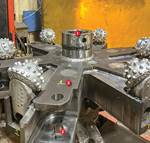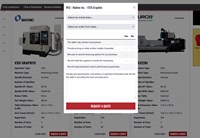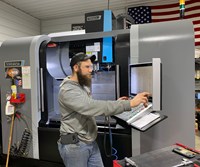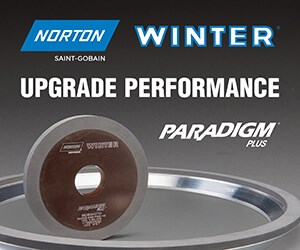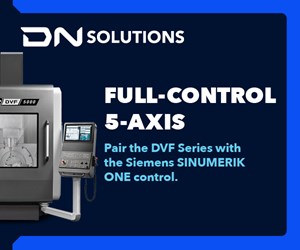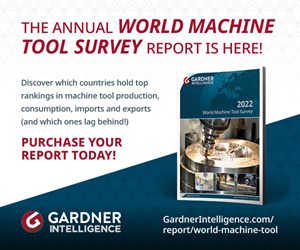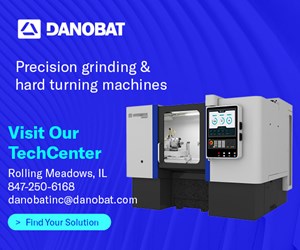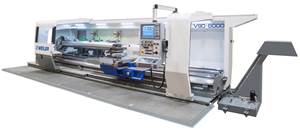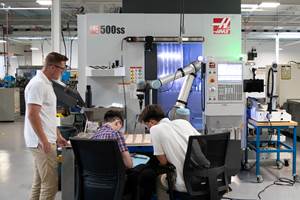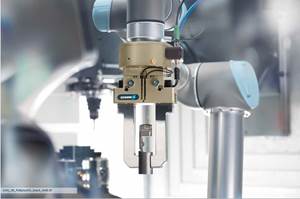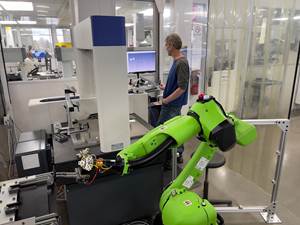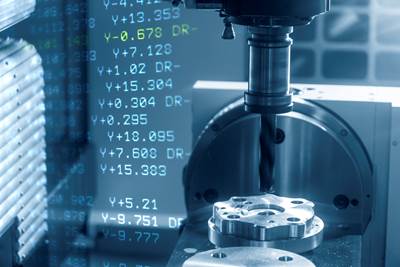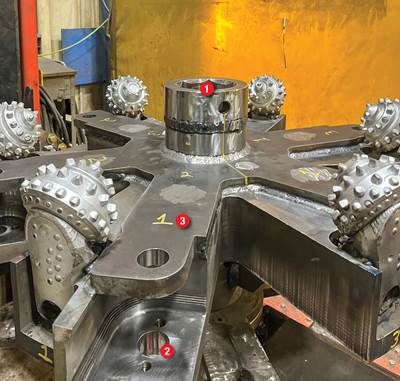Old Machines Are Also Automation Candidates: 40-Year-Old Machine Adapted into Unattended System
Integrating an automatic positioner with a formerly manual jig borer brings increased efficiency to secondary operations.
Ask a manufacturer to point out its automated production system, and you are likely to see the most modern and advanced system at work in the shop. Perhaps that automated system consists of a robot loading and unloading an advanced machining center or multitasking lathe. On the other hand, TigerStop, the supplier of material positioning equipment, makes a case for the automation of dated machinery as well—including pieces of equipment that otherwise might be forgotten. An example of this is part of the company’s own production process: a circa 1973 jig borer that has been adapted into a system for ongoing unattended production.
The jig borer, which paid for itself long ago, had been used less and less over time within TigerStop’s manufacturing facility in Vancouver, Washington. It recently found new life in its secondary-operation role when the facility mated it to one of the company’s own products: an automated positioner for metalworking operations called the TigerRack. This positioner pushes with a 720-pound force to move stock including metal plate and tubing. In the jig borer application, it repetitively advances steel stock that is machined into face plates for this very positioner model.
The jig borer performs drilling and chamfering operations. Of course, this was not an automated machine in the past. TigerStop’s team sees that very fact as a valuable one, illustrating one of the central ideas the company seeks to advance: Namely, there are chances to automate beyond a shop’s CNC machines.
An interconnection kit available for the positioner system makes automation possible. The kit connects to a relay logic box, which synchronizes the material feed with the motion of the non-CNC machine’s air cylinder. Thus, in operation, the spindle moves up out of the way of the work as the positioner advances the stock to the next position within 0.008-inch accuracy, at which point the spindle moves back down to make the cut. The operator can walk away and leave the machine producing. This delivers significant savings, because past drilling and chamfering operations required active employee participation for loading parts and initiating the cuts. The process now looks like this:
To be sure, this facility also has CNC equipment, and more productive use of this equipment is actually one of the benefits the company is seeing thanks to the automation of this secondary process. In theory, it has always been possible to drill and chamfer parts while a cycle was running on the machining center, but in practice the machinist can never quite break away from this task with the kind of timing that is perfectly synched to the completion of the machining center cycle. Being able to trust the drilling and chamfering work to continue means the machinist is always ready to change over the higher-value machine tool when the moment comes.
Material cost savings is also a noticeable factor. In the past, scrap happened—mistakes are inevitable in any process run by people. The virtue of a proven, repetitive, automated process is not just the freedom from labor cost, but also the freedom from human error.
CNC obviously could deliver these benefits as well. So why not just do the drilling and chamfering within the machining center? TigerStop says the answer is that these operations are too simple. The higher-value machine ought to be devoted to higher-value work. That is the reason these secondary operations were assigned to an older piece of equipment in the first place. And yet, lower-value does not mean lower-impact—secondary operations should not be overlooked. There are automation opportunities within this work as well.
Related Content
Weiler to Debut New Automation Features For Its Lathes
Weiler’s V 110 four-way precision lathe introduces features new to the U.S.
Read MoreCNC Machine Shop Honored for Automation, Machine Monitoring
From cobots to machine monitoring, this Top Shop honoree shows that machining technology is about more than the machine tool.
Read MoreLean Approach to Automated Machine Tending Delivers Quicker Paths to Success
Almost any shop can automate at least some of its production, even in low-volume, high-mix applications. The key to getting started is finding the simplest solutions that fit your requirements. It helps to work with an automation partner that understands your needs.
Read MoreBeyond the Machines: How Quality Control Software Is Automating Measurement & Inspection
A high-precision shop producing medical and aerospace parts was about to lose its quality management system. When it found a replacement, it also found a partner that helped the shop bring a new level of automation to its inspection process.
Read MoreRead Next
3 Mistakes That Cause CNC Programs to Fail
Despite enhancements to manufacturing technology, there are still issues today that can cause programs to fail. These failures can cause lost time, scrapped parts, damaged machines and even injured operators.
Read MoreThe Cut Scene: The Finer Details of Large-Format Machining
Small details and features can have an outsized impact on large parts, such as Barbco’s collapsible utility drill head.
Read More
.jpg;width=70;height=70;mode=crop)

